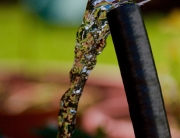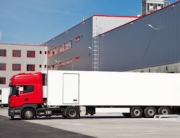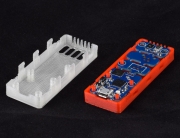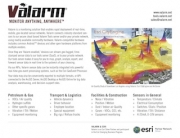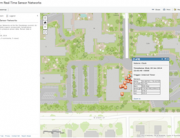 No matter how wonderful your system is, if it is not cost-effective it will not survive.
No matter how wonderful your system is, if it is not cost-effective it will not survive.
In her article “High-tech water warning system sits unused in Southeast Michigan“, Paullette Parker discusses an incredible piece of early warning technology, that sits essentially unused, although it seems that legislation is being looked at in order to reactivate the system.
 It is possible that some of the equipment used in the system (mass spectrometers and gas chromatographs that detect contaminants in real-time) may be necessary. However, certainly other components of the system such as this should be reviewed with an eye towards a lower cost solution.
It is possible that some of the equipment used in the system (mass spectrometers and gas chromatographs that detect contaminants in real-time) may be necessary. However, certainly other components of the system such as this should be reviewed with an eye towards a lower cost solution.
In our experiences, we’ve seen tremendous overkill in real-time monitoring systems in terms of the hardware that is being used today. It is often, bulky, outdated, expensive and being used because “that is what everyone has used”.
 That statement is the exact same thing as saying “that is how we have always done it”, and anyone who says that does not innovate, and lives in the past.
That statement is the exact same thing as saying “that is how we have always done it”, and anyone who says that does not innovate, and lives in the past.
We recommend that a cost cutting analysis should be taken on the following pieces of any monitoring system:
- Sensor hardware – Is it appropriate for the task at hand or is it overkill? With something like drinking water maybe it makes sense to splurge on a quality sensor – maybe it doesn’t.
 Communication hardware – How is the data from the sensor being transmitted out to an analysis center. Is it a cellular system used by mobile phones and other devices? If so, can you change that to WiFi, Long Distance WiFi, or even plain old land line ethernet? If it has to be cellular, then can you use hardware that is just as reliable but less expensive. The monitoring system in the mentioned article was built in 2006, there are more cost effective solutions today.
Communication hardware – How is the data from the sensor being transmitted out to an analysis center. Is it a cellular system used by mobile phones and other devices? If so, can you change that to WiFi, Long Distance WiFi, or even plain old land line ethernet? If it has to be cellular, then can you use hardware that is just as reliable but less expensive. The monitoring system in the mentioned article was built in 2006, there are more cost effective solutions today.- Where is the data going, how is it being stored, and how is it being analyzed? Out of the three cost saving branches here, this is one that has changed tremendously over the last decade. Cloud services for remotely monitoring Industrial IoT sensors are now inexpensive and reliable. Analytics and dashboard / warning systems are also extremely cost effective. Tremendous savings can occur here.
As a final point – I truly hope that when reactivating this system the powers that be actually look at alternatives as opposed to just going with the status quo. I would expect them to have a duty to do so.
 If you work on projects such as the one discussed in Ms. Parker’s article, projects like: Water Monitoring Systems, you should be aware of Tools.Valarm.net.
If you work on projects such as the one discussed in Ms. Parker’s article, projects like: Water Monitoring Systems, you should be aware of Tools.Valarm.net.
Why? Honestly, there are quite a few reasons, 1 key advantage is that all of your sensor data is visualized on real-time web dashboards for immediate insight and analysis. What else?
 Please don’t hesitate to give us a call at +1 (424) 442-0963 if you’d like to know more. Or if you’ve got any questions about just about anything!
Please don’t hesitate to give us a call at +1 (424) 442-0963 if you’d like to know more. Or if you’ve got any questions about just about anything!
You can click here to contact a member of the Valarmy or send a message to Info@Valarm.net, we promise we’re all pretty friendly!













































































































































































